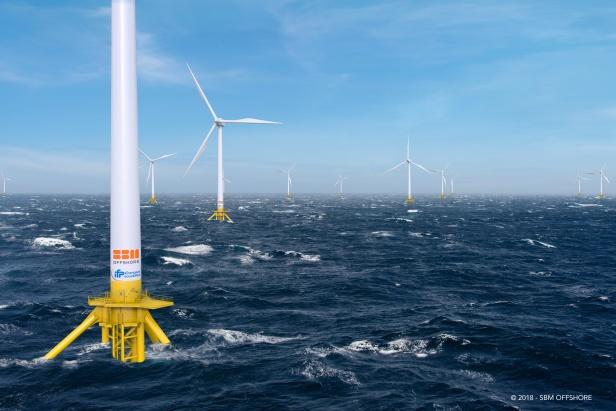23.10.2020
2 minutes of reading
IFP Energies Nouvelles (IFPEN) has benefited from 6 million hours of computing time on the new Jean Zay supercomputer, acquired by GENCI (Grand Equipement National de Calcul Intensif), the French High-Performance Computing agency, and hosted at IDRIS. The aim of this "Great Challenges" project is to study the behavior of floating offshore wind turbines in the different sea and wind conditions to which they are subjected and to estimate their design life. This is the first time that researchers have taken into account, in an exhaustive manner, all the environmental conditions representative of the life of floating wind turbines to calculate their fatigue life. The challenge is to be able to optimize the reliability of floating wind turbines and reduce production costs.

Ranked 54th in the TOP5001- a ranking of the 500 most powerful computers in the world - the Jean Zay machine offered, just before it went into operation, the opportunity for a few academic and industrial pilot users to access computing resources to carry out very large simulations, known as "Great Challenges".
IFPEN has thus won a "Great Challenges" call for projects, making available 6 million hours of machine calculation time (the equivalent of around 300,000 simulations) for its project to study the behavior and lifespan of floating offshore wind turbines (floating support and anchoring lines).
An exhaustive reference base leading to evolutions in design methods
Conventional approaches only partially explore the combinations of marine environmental parameters (wave height, swell period and wave direction) and wind (average speed, turbulence and direction) to which a floating wind turbine can be subjected. Using the computing power of the Jean Zay machine made it possible to take into account all these combinations associated with a given site and to complete this work in 5 days, the equivalent of 80 years of calculations on a standard PC.
These numerical simulations now provide an exhaustive reference base, adapted to the fatigue design of offshore wind turbine structures. This reference base will allow to qualify the new "adaptive" design-of-experiment methodologies, currently being developed by IFPEN, which are based on the automatic identification of the combinations of environmental parameters likely to create the most fatigue damage to the wind turbine. Low cost in terms of calculation time and very accurate, these methodologies could eventually lead to new approaches for the engineering and certification of future wind energy projects.
An economic challenge for floating wind turbines
In a context of energy transition, floating offshore wind offers interesting opportunities for low-carbon electricity production. Located offshore in water depths of more than 50 meters, floating wind turbines benefit from more favorable wind conditions. Various pilot and pre-commercial farm projects are being deployed, such as the Provence Grand Large project led by EDF Renouvelables, which plans to install three wind turbines by 2022, and whose floating support was co-developed by SBM Offshore and IFPEN. Reducing costs remains a major challenge. Industrial players are aiming at a cost of €80-100/MWh for the first commercial farms by 2023-2025 according to WindEurope. Optimizing the design of floating structures in the face of complex environmental conditions is therefore central to achieving the competitiveness objectives of the industry.
1- List TOP500 – June 2020
Press contacts
Anne-Laure de Marignan, IFPEN, +33 1 47 52 62 07, presse@ifpen.fr
Pia Manière, Epoka, +33 1 86 90 42 61, pmaniere@epoka.fr





